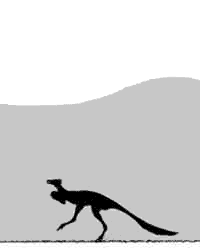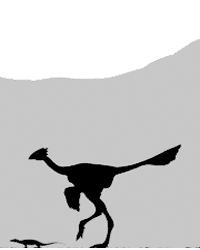| |
|
Figure 1
Figure 2 |
||
|
Exactly how birds acquired the ability to fly has baffled scientists for years. Archaeopteryx provided a starting point for speculation. Built like a dinosaur, but with wings, scientists guessed at how a hypothetical ancestor of Archaeopteryx might have taken flight. In almost every vertebrate class there are examples of animals that glide – from flying fish to parachuting frogs and flying squirrels. All use a flap of skin to slow their fall through the air. Some scientists suggest the ancestors of Archaeopteryx lived in trees and glided into flapping flight (Figure 1). But others argue the claws seen on Archaeopteryx weren't suited to climbing. They insist that these ancestors used their long, powerful legs to run fast with their arms outstretched, and were at some point lifted up by air currents and carried into flapping flight (Figure 2). Studies of living animals can throw light on their evolutionary past. Dr Ken Dial of Flight Lab, Montana University, USA, noticed the ability of gamebird chicks to escape danger by scrambling up vertical surfaces. The chicks first run very fast, flapping their immature, partially feathered wings, frantically creating enough momentum to run up a vertical surface to safety. Could this survival instinct be the origin of flight? Whatever the origins, dinosaurs eventually took to the air. The Liaoning fauna has given us a unique glimpse into a world where a variety of feathery, theropod dinosaurs lived side by side. |


